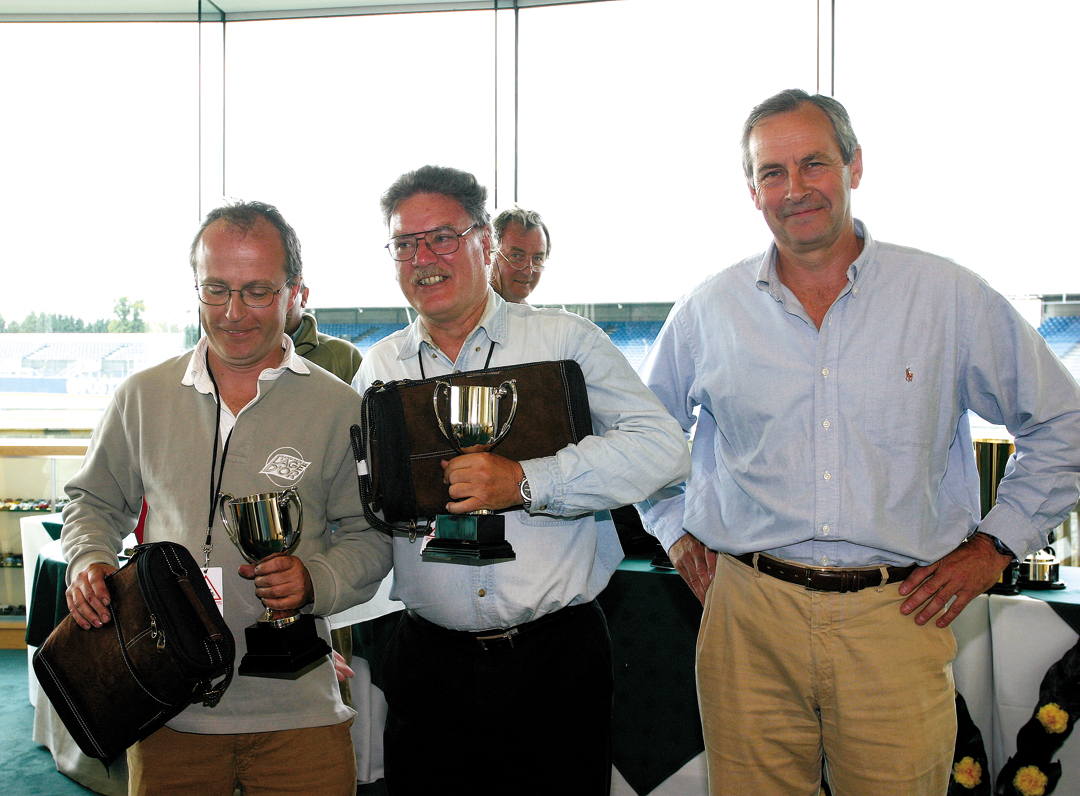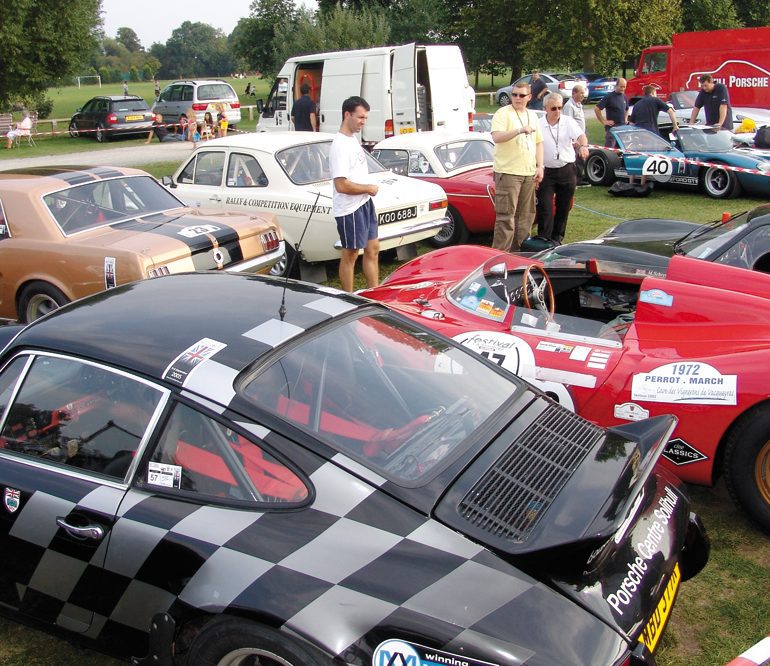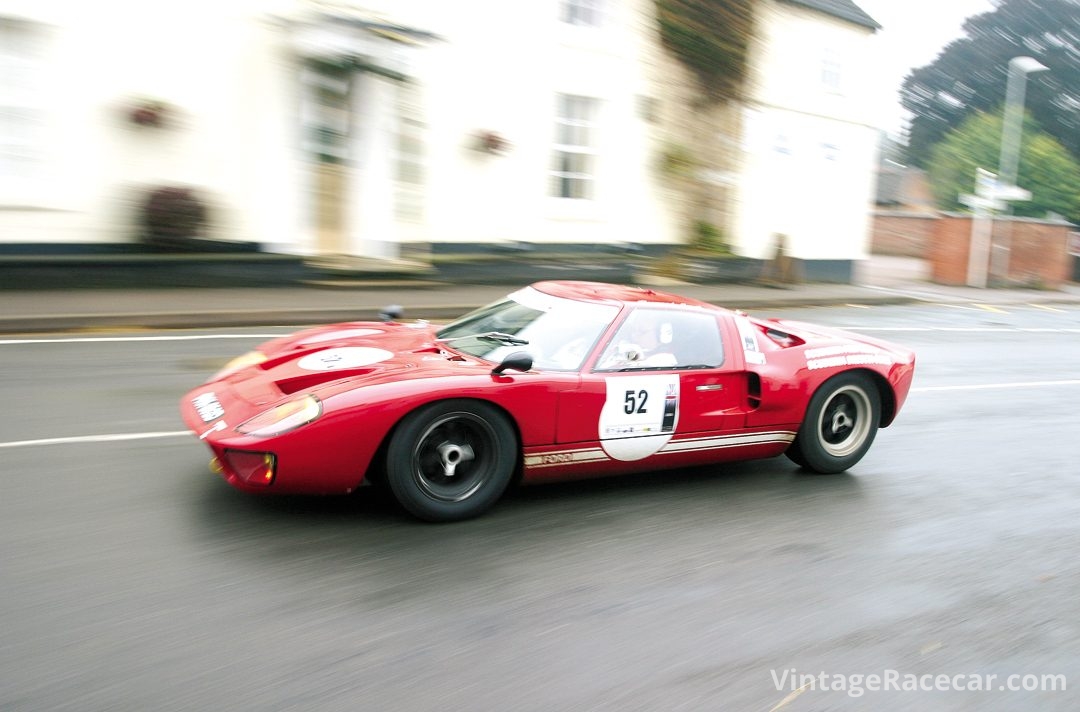The Tour Auto in France, the Tour d’Espagne in Spain, the Tour of Morocco and several other events which combine racing cars, public roads, circuit races, special rally stages, and hill climbs have all gained in popularity and following over the last several years. Britain is one of the few serious classic car countries, which has not had a similar event. All this changed between September 5–8, 2005.
In the 1970s, the Avon Motor Tour of Britain took place in 1973 for the first time, with modern cars covering races and stages around most of the UK. James Hunt and Robert Fearnall won in a Chevy Camaro entered by Alan Rivers. I was in the Ford works team with Grand Prix-driver Vern Schuppan in a Ford Consul GT. The event ran for a few years and died out, during a time of fuel shortage and decreasing interest by spectators in modern cars.
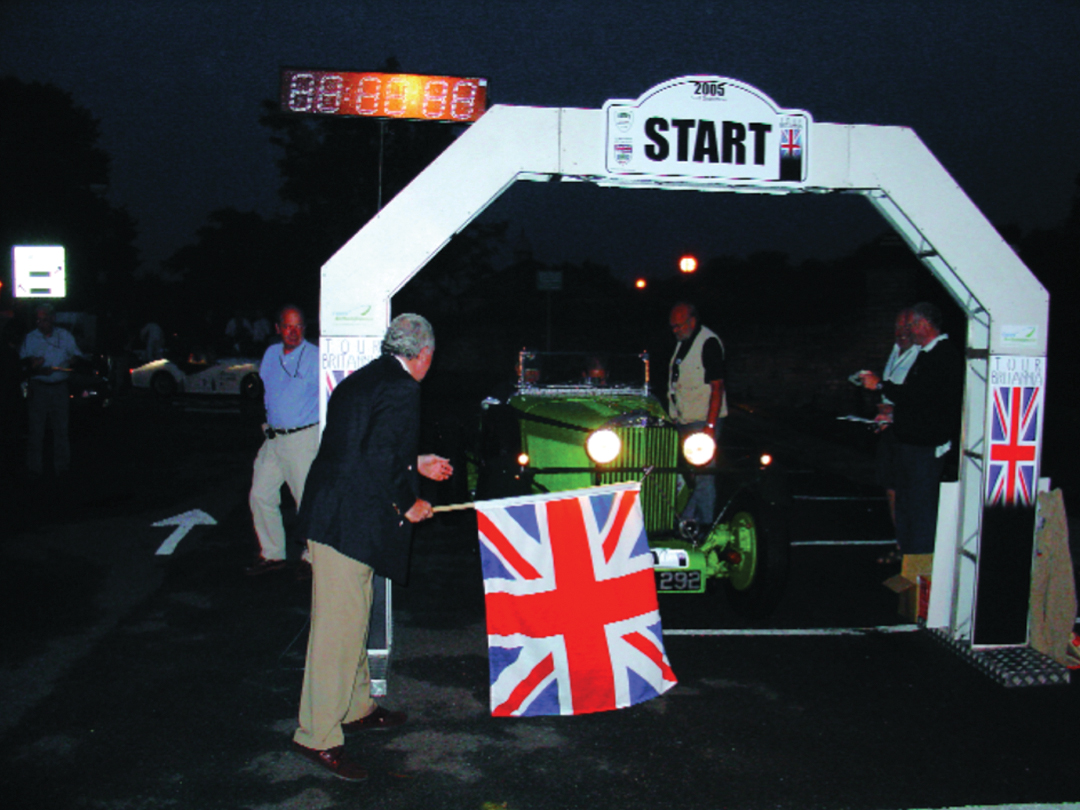
The Tour Britannia was the bright idea of long-time Irish rally veterans Fred Gallagher and Alec Poole. Eighteen months ago, they started to think about bringing back the Tour, but this time for pre-1976 historic cars, which were registered for the road. Stuart Rolt and the British Racing Drivers Club got behind the idea and enthusiasm from competitors soon followed, though nobody was certain what the entry would look like until shortly before the start.
I loved that first Tour of Britain, where James Hunt had been joined by Graham Hill, Howden Ganley, Roger Clark, Prince Michael, and many, many more competitors. I really wanted to get into the Tour Britannia so Fred Gallagher pointed me in the direction of John Ruston. Ruston runs three Talbot 105s in historic races. These are the Team Talbot cars of the early 1930s and have won important events in period, and have also done well at the recent Mille Miglia and Le Mans events. One of the cars won the Alpine Trials in 1934, while another set a record at the Shelsley Walsh Hill Climb. In recent times, they all did well at the recent Silverstone Classic. Ruston had decided to run a car for himself and Jeremy Haylock in the Touring Regularity section of the Tour, while Gareth Burnett, the quickest driver in the team, would handle one in the Tour Competition section—with me as co-driver. A third entry was dropped so a car could be ready for a race at Silverstone two days after the Tour finished, so Nick Finburgh/Ollie Crosthwaite were the third Team Ruston entry in Aubrey Finburgh’s lovely old C-Type Jaguar.
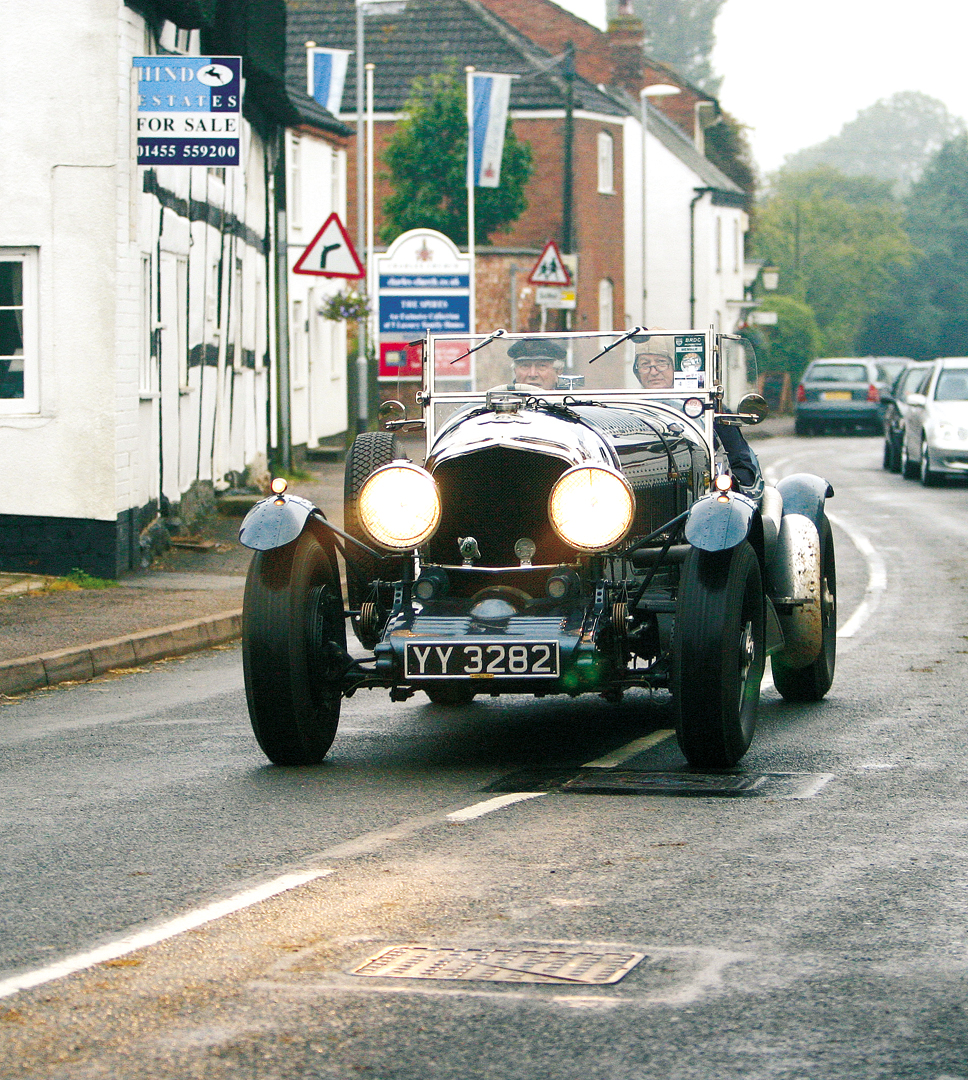
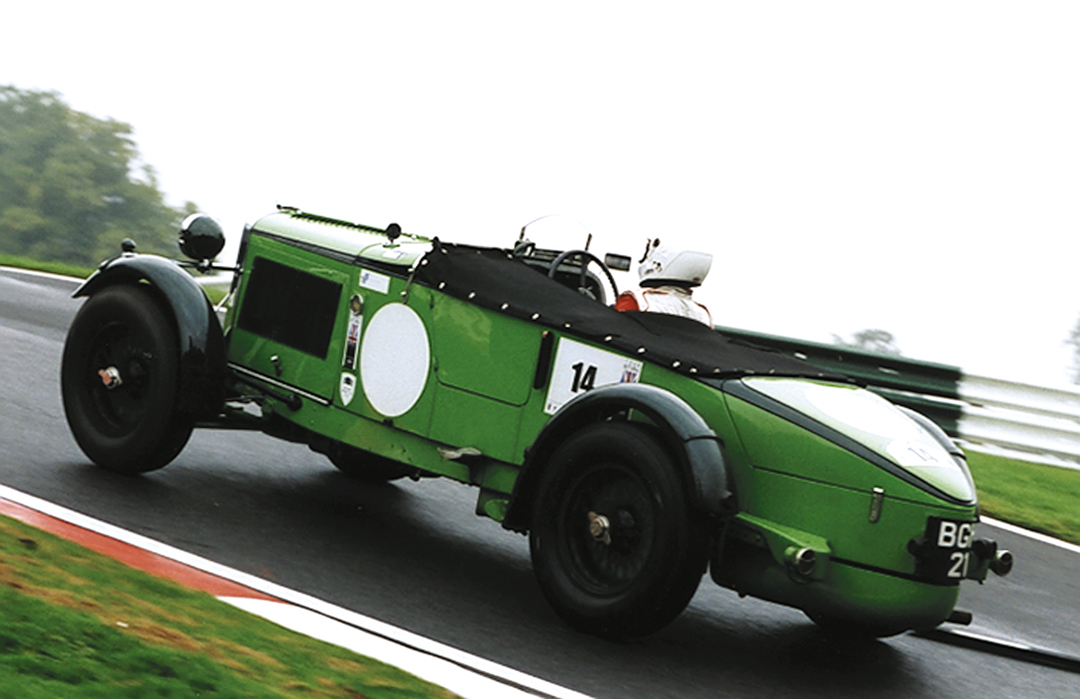
The Touring Regularity group was small, eight cars to essentially run against the clock and keep to a set speed, while there were 66 cars, across 12 classes in the Competition section, which meant running as fast as possible on the 21 stages. These stages included races at Silverstone, Cadwell Park, and Rockingham Motor Speedway; hill climbs at Shelsley Walsh and Loton Park; and special rally stages at some of the best UK rally stage venues. The road mileage would be near 1,000 miles, with quite “tight” road sections making it necessary not to take it easy, much like the Tour Auto in France. The main award in the big Competition group would not be for the overall winner but the winner on Index of Performance. The Index winner would get the BRDC’s magnificent Johnny Wakefield Trophy.
Sunday Scrutineering
The organizers had decided to run this first Tour as a four-day event with a central base at the scenic Stratford-upon-Avon, with scrutineering and parc ferme in one of Stratford’s main parks, guaranteeing lots of visitors and tourists coming to see the cars as they arrived on Sunday for technical scrutineering. As the Tour returned there each night, there was always a big welcome in the center of the historic town.
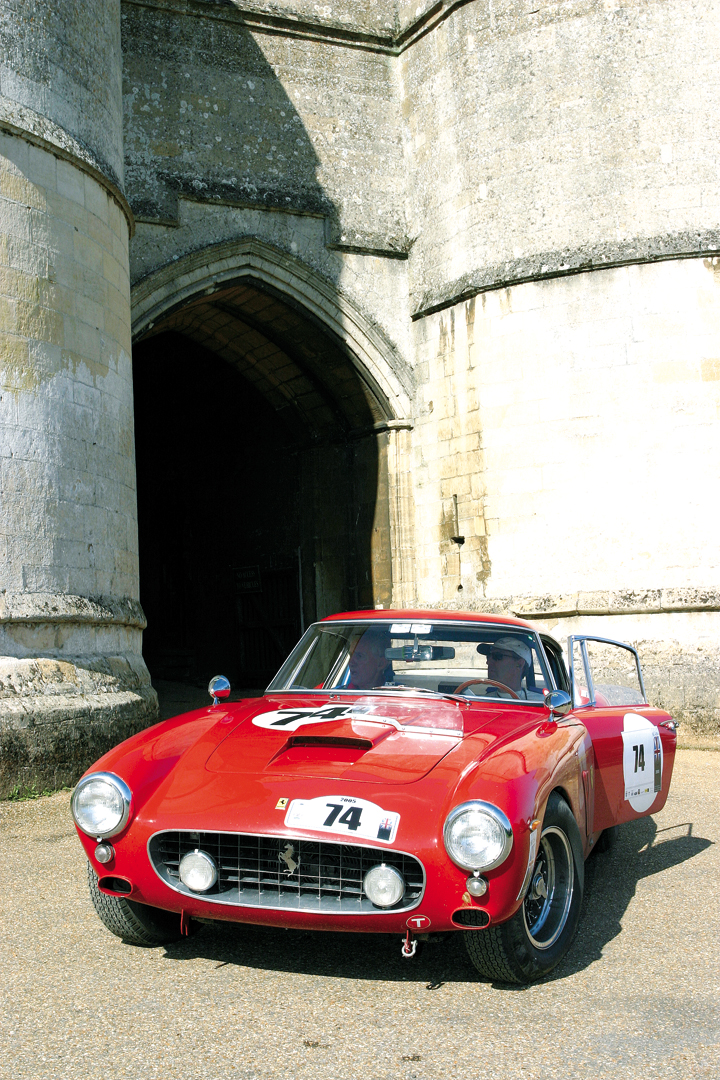
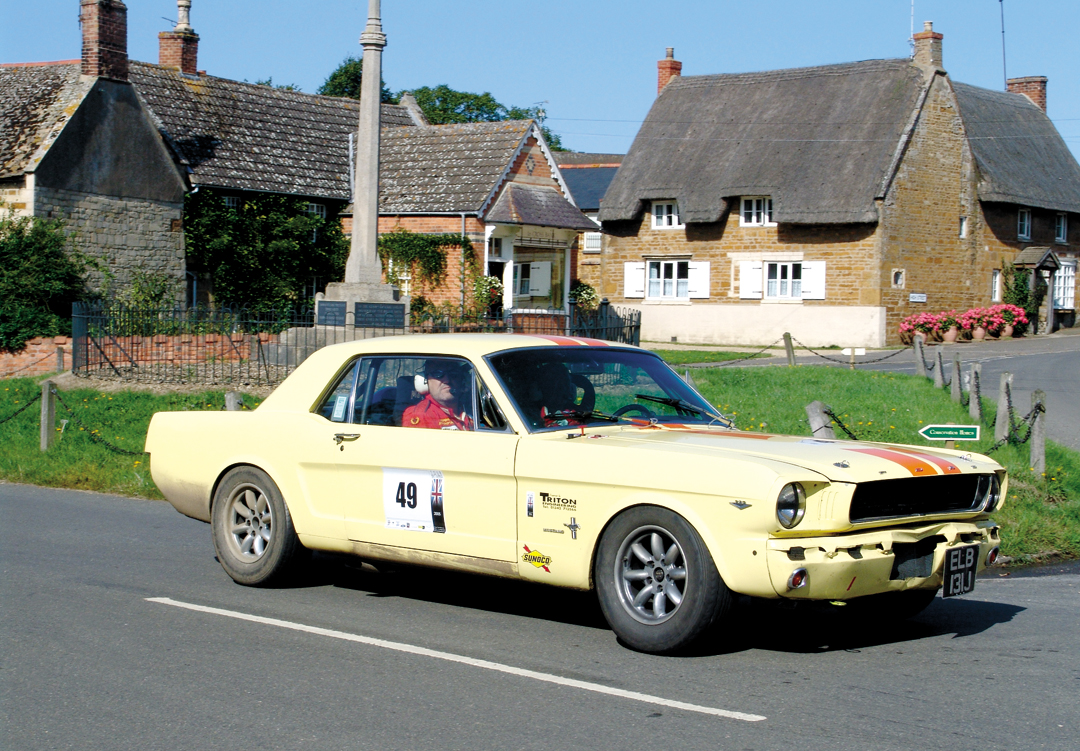
As I was a pretty last-minute entry, I was meeting most of my team and the competition on Sunday afternoon before the briefing meeting. The bigger and faster cars were headed by three wonderful Ford GT40s: McLaren designer and serious racer Adrian Newey was in his ex-Essex Wire car with Dean Lanzante, while Paul Lanzante was co-piloting Ray Bellm, while the third GT40, an ex-Filipinetti/Brescia Corse car, was run by Richard Meins and Desmond Smaill. This trio was destined to be chased hard by the Lotus 30…yes Lotus 30!…of Howard Redhouse and Richard Shaw. This car, which seemed such an unlikely road-going endurance car, had already won the Italian Cento Ore a few years ago so was a threat, as was the Schyver/Hadfield Chevron B6-Ford.
The experienced John Sheldon in his Lotus Elan looked to be an overall winner, as did the Porsche 911 Carrera RS of Nick Whale/Sally Wood, the Porsche 911 of Nick and Mary Faure, and the 2.7 Carrera RS of David Fitzsimons/Bill Wyckham. The Ferrari 250GT SWB was beautiful and looked an outside possibility as did veteran racer Barrie Williams/Alan Newton in an MGB. A complex formula was used to set the Index of Performance and the cars which looked likely to have a good chance at overall victory on Index were the Lotus Elan, the Chevron B6, the Corvette of Ted Williams/Chris Clarkson, the German-entered Alvis Speed 20 of Rudiger Friedrichs/Wolfgang Kalf…and our 71-year-old Talbot! The Alvis turned out to be a 4.5-liter special so it would be tough competition.
Monday, Leg 1
The Regularity cars were sent off at a 6:15 a.m. start in the dark Stratford morning, with rallying great Paddy Hopkirk waving the Union Jack to get the Tour underway. As car number 14, our Talbot would head out into the blackness and a light rain at 6:29 a.m. with little hope of being back in parc ferme in less than 14 hours…a long first day. Fortunately, the rain stopped and we never saw it again all week. The teams headed into Leicestershire and Belvoir Castle, the home of the Duke and Duchess of Rutland for over 1,000 years and a spectacular setting for the first special stage. Our Talbot was already in trouble, running out of fuel after a miscalculation and massive traffic meant we couldn’t find fuel without being late. Our crew saved us with a delivery of fuel but it was a very quick trip on the roads to the castle. This problem saw us in 2nd in our prewar class behind the Alvis, but ahead of the Invicta of Hansrudi Portmann and long-distance Ferrari 512 driver Rene Herzog. After hurtling through the damp special stage at Belvoir, it was straight east to Cadwell Park in Lincolnshire, the “mini-Nürburgring,” where the Touring Regularity cars had laps of the superb circuit at a set speed, while the two large groups of Competition entrants practiced for a race for each group.
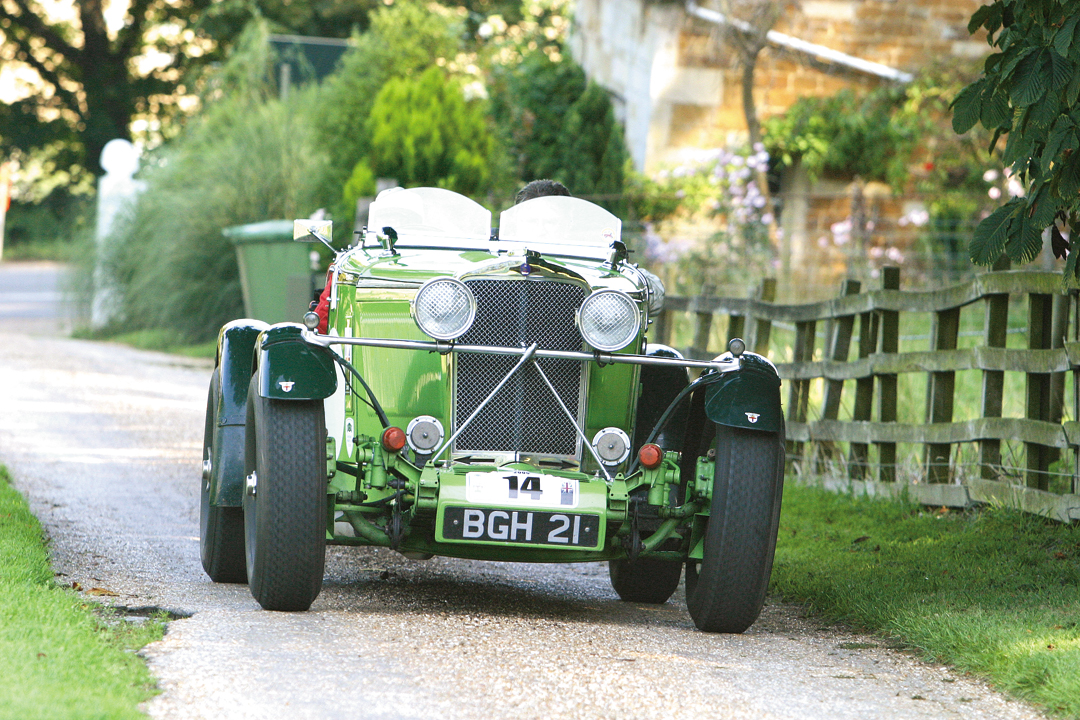
Cadwell was followed by a short blast down the road to the Manby special stage, an ex-RAF station which would be run twice, and then to another RAF airfield at Swinderby for two runs on the very fast open track, where we clipped a bank with the Talbot which reared up but managed to stay on all four wheels. It was perhaps that bank that led to a problem, which would strike us later in the Tour. All the cars then turned back west and headed back across country to Stratford, and a long service before going into the closed parc ferme.
On Monday night, Frenchman Chiaravata had taken a 6.5-second lead in his BMW CSI in the Touring Regularity group, heading John Ruston in our other Team Talbot car. In Competition, the speedy GT40 of Ray Bellm led overall, heading the Lotus 30, Adrian Newey’s GT40, and the Lotus Elan. The Alvis led the Lotus Elan in the important Index category.
Tuesday, Leg 2
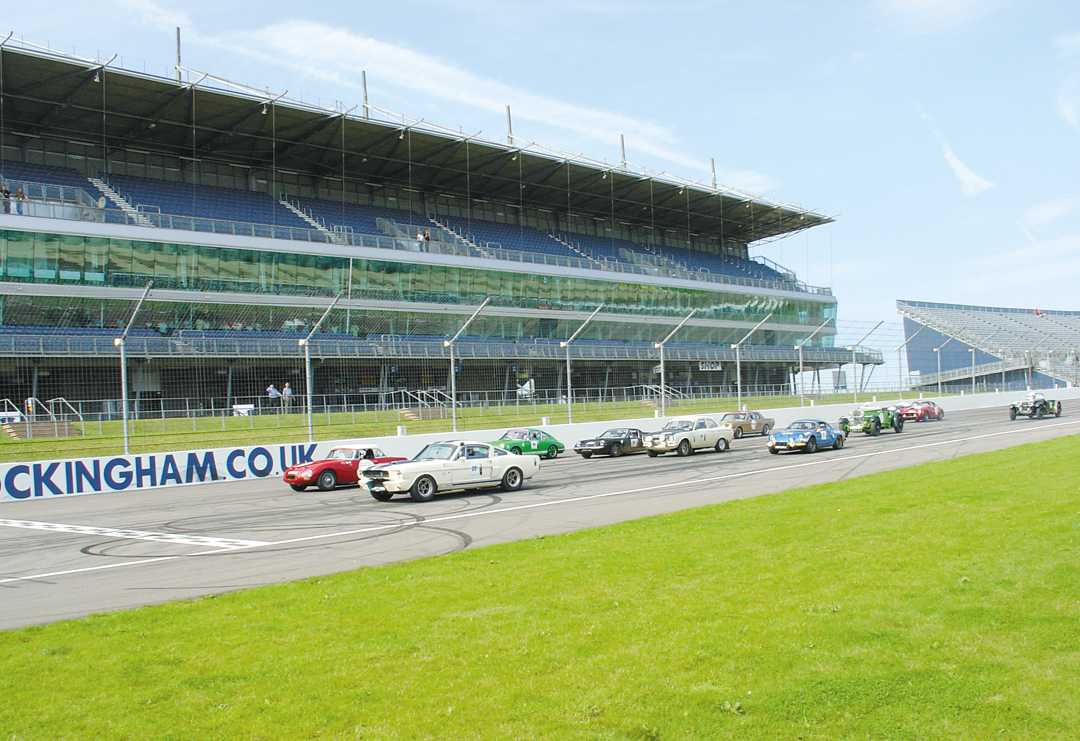
The 7:00 a.m. start came around very quickly, and the crews were soon at the Motor Industry Research Association (MIRA) test track for another high-speed stage. In the dry, the more modern racecars were extremely fast, reaching 170 mph on the straight. The Talbot beat the Alvis to consolidate the class lead, though Bellm’s GT40 was some 7 seconds quicker. Then it was off to Rockingham Motor Speedway for a stage on the circuit, as well as a race, but we stopped first at Rockingham Castle, a spectacular fortress with magnificent views. This was a breakfast stop though it seemed like we had been going for hours. Just down the road was the Speedway, a daunting setting for historic cars. Gareth and I thrashed around the tricky stage set out on parts of the banked oval and road circuit, as he pushed the old Talbot very hard—I shouted and hung on!
On the circuit and fast stages, the Bellm GT40 and the Lotus 30 each had two wins, with Newey’s GT40 always close behind. Newey had had a big spin at Cadwell but was not slowing down…he’s a very serious racer. John Ruston and Jeremy Haylock in our team Talbot had moved into the lead of the Touring Regularity group, getting a perfect time at Rockingham. By the time we arrived back at Stratford, our Talbot had moved into 2nd overall on Index behind the Alvis, but the Lotus Elan was breathing down our necks. Ray Bellm had the outright lead, which he would hang onto most of the event. The MIRA stage had been a good, fast run for us but Gareth had pulled out a minute advantage on the Alvis at Rockingham, where the Talbot was a handful on the tight corners but thrilling flat out around the banking. I found sitting in a 71-year-old car with no seat belts or rollbar at 120 mph “exciting”!
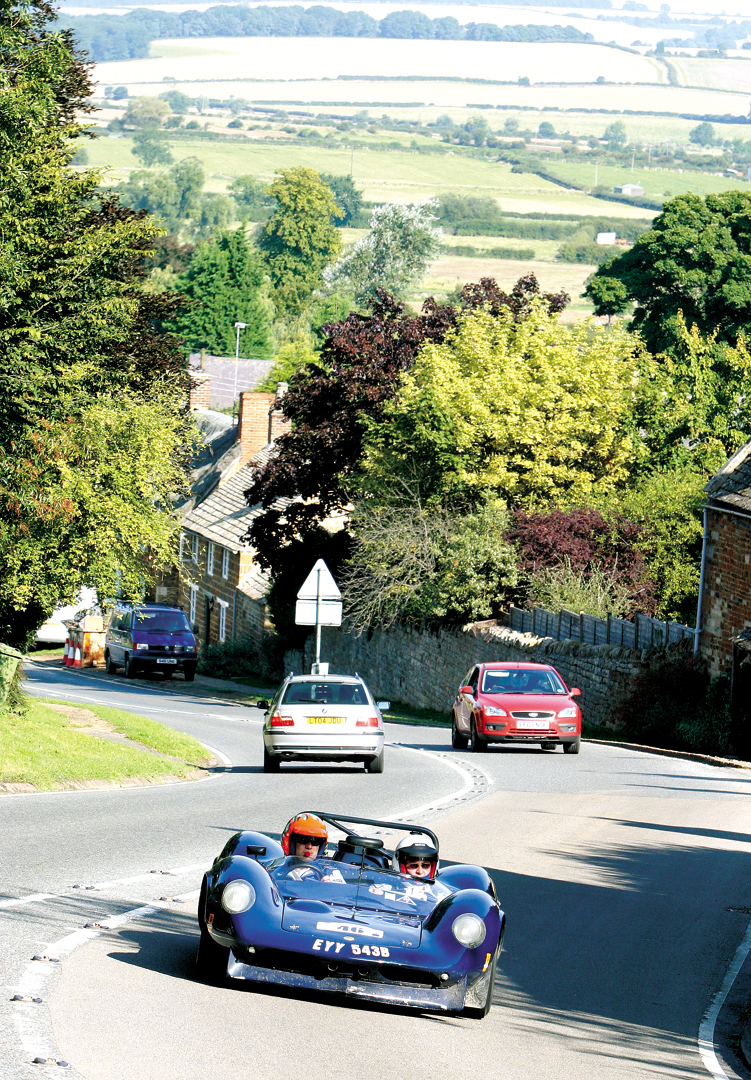
Wednesday, Leg 3
After another early start from Stratford, now bathed in bright sunshine, the Talbot got into serious trouble on the 68-mile trip to the famed Shelsley Walsh Hill Climb. The Talbot lost all its gears as the lock nut retaining the gearbox bands came off, making it necessary to strip and rebuild the gearbox with the help of another team’s service crew in the morning traffic of Ombersley. Thanks to Francis Tuthill Porsche and Francis himself, we got going and made another very speedy road section to Shelsley, just in time to get our familiarity run, as neither of us had ever been up the famous hill before. Shelsley is a wonderful place where you can feel the history of British motor racing and hill climbing. One of the team Talbots had set a record there in the 1930s of 45 seconds. Gareth Burnett, with a “fat passenger” managed a 42.7 seconds and a 42.2 seconds with the torque of the mighty Talbot being very impressive…especially to me.
Leaving Shelsley, which had its 100th anniversary this year, and is known as the “Monaco of hill climbs,” the loose lock nut lodged itself between the gears and the box had to be stripped again. Our crew was there to help, but it took some time with a tiny magnet on a wire to find and repair it. Yet again we were driving rather too fast heading north to the second hill climb of the day at Loton Park. Loton Park is in a beautiful setting with a challenging climb, one of the best liked of all the stages on the Tour. With switchbacks and off-camber corners, it was very hard indeed. The Talbot again beat the Alvis on both runs and was even quicker than the Jaguar C-Type. Two more special stages, at the great English house at Weston Park and the well-known sprint course at Curburough, followed and the Lotus won a total of five stages during the day, while Newey took two.
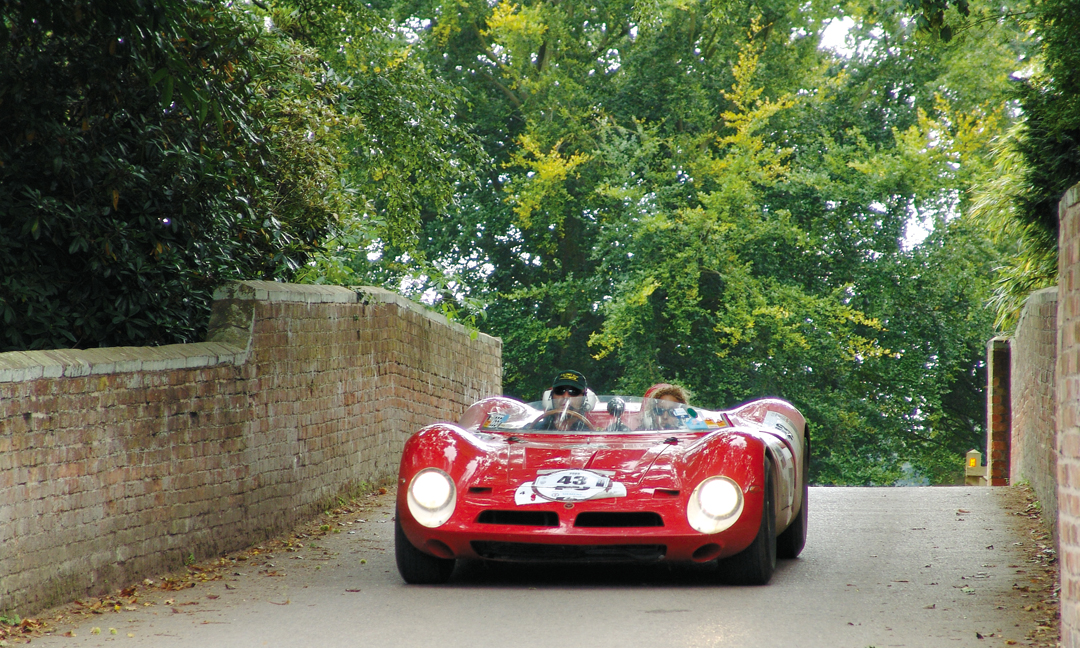
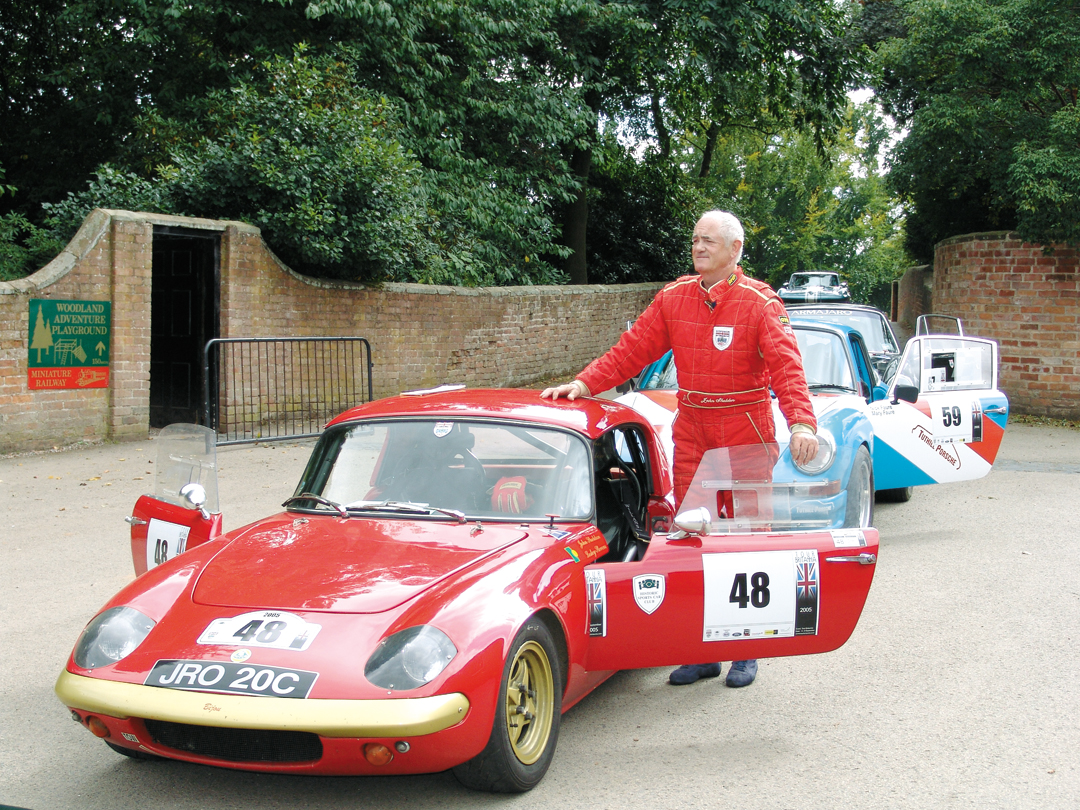
As we returned to Stratford for the last time, our Talbot had dropped to 3rd on Index but then risen back up to 2nd as Gareth and the Talbot beat the Alvis soundly on all the stages. Our teammates in the other Talbot were now in gearbox trouble as well, as first then second gear went, so they had to go more cautiously and were just leading the Touring Regularity category. Also in that group was the great Derby Bentley of Michael Campbell. His co-driver was Robin Widdows, a quick F2 driver of the 1960s who drove a Cooper-BRM at the 1968 British Grand Prix. Ray Bellm was way out front overall but the Alvis was in front on Index.
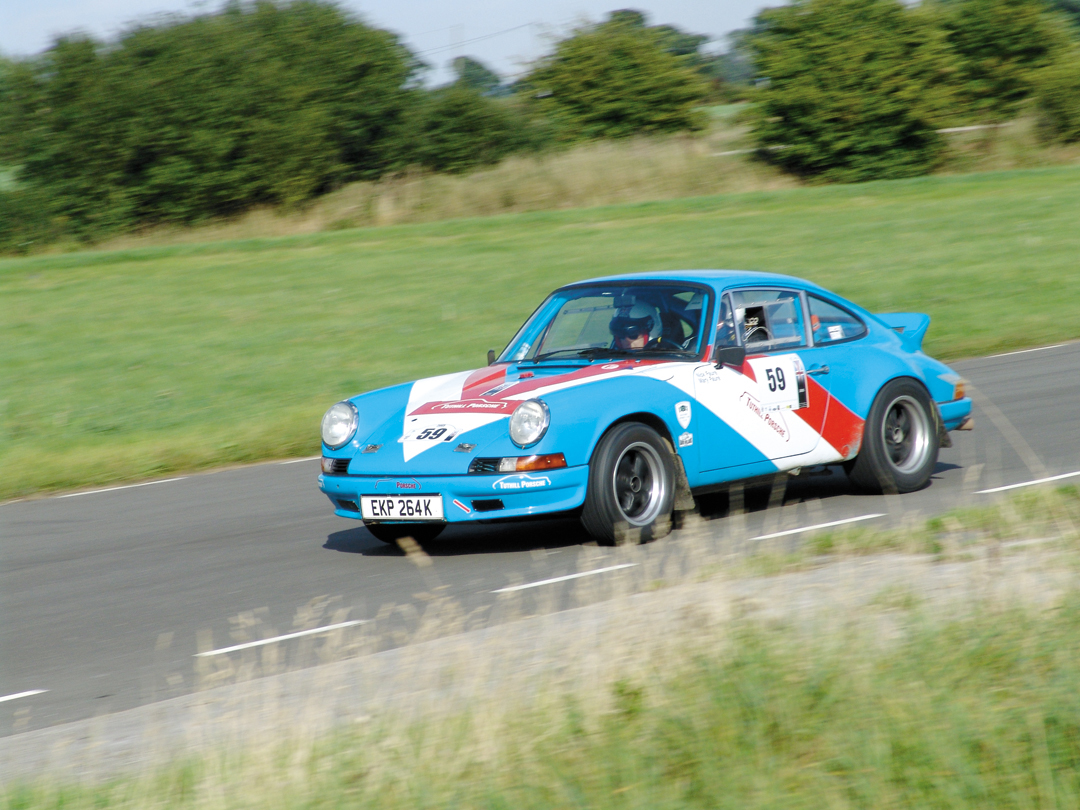
Thursday, Leg 4
The final day was a scenic drive to Silverstone for two races. The Index would be settled after the first race, which included all the cars. Then there would be a second race for everybody and a prize ceremony at the BRDC headquarters.
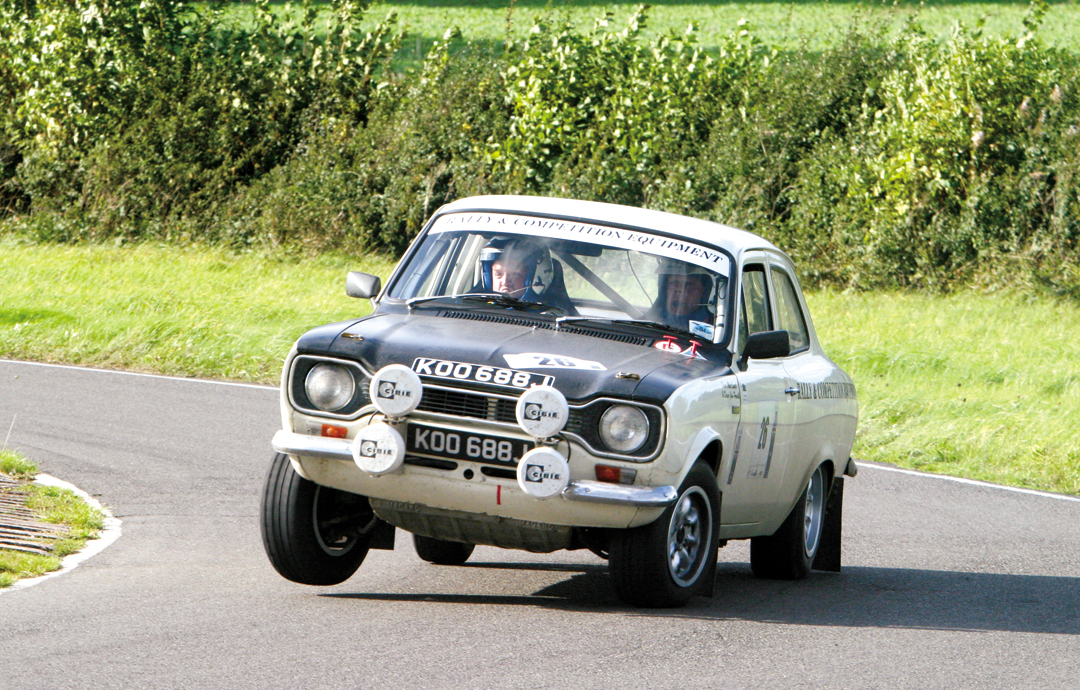
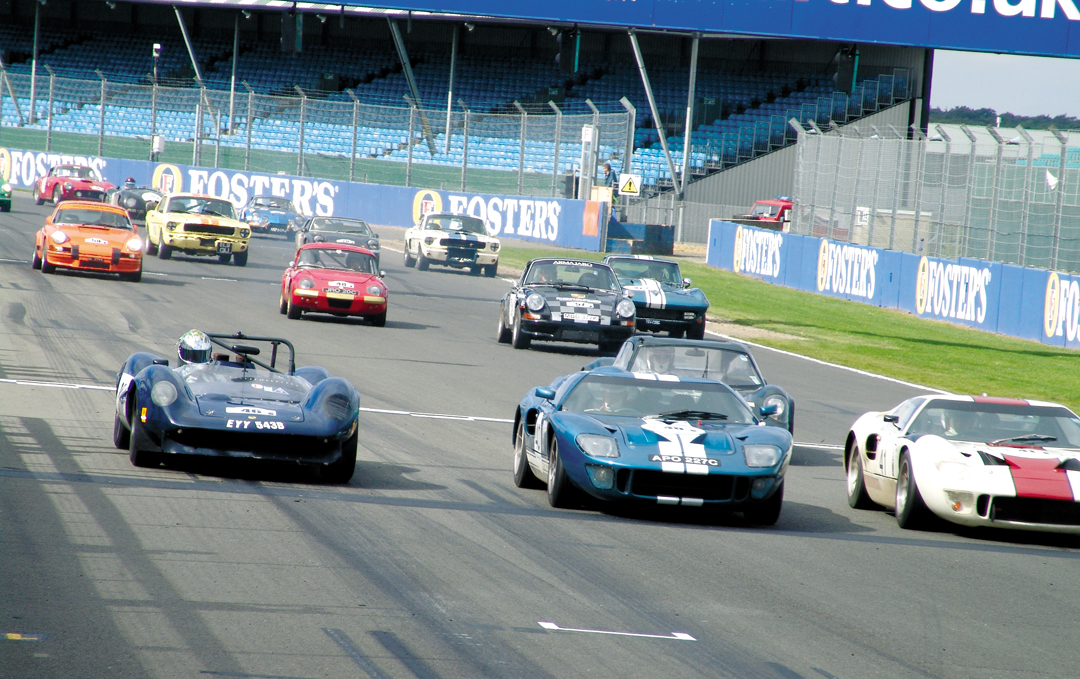
John Ruston/Jeremy Haylock had moved further ahead and took the victory in Touring Regularity, which gave us a target in the other Talbot. We had led the class the whole way and were now 2nd overall…a great position, and we knew we could beat the Alvis in the race and maybe steal the win in Index. However, it was not to be as the hub sheared on the left rear wheel on the first lap of the race, the same wheel we had banged into a bank earlier in the event. Fortunately, Gareth Burnett brought the car to a halt without injury and not too much damage. That was the Index gone, but as the Alvis won the Tour overall on Index, it meant we took the class, so both old Talbots had done very well.
Ray Bellm’s GT40 was 1st overall and won Class 3, with Redhouse’s Lotus 30 an amazing 2nd and still going after 1,000 miles! Adrian Newey was 3rd overall. Frederichs/Kalf and the Alvis won the big award for Index of Performance, ahead of the Lotus Elan and Schyver’s Chevron, with the Talbot dropping back but still getting 4th.
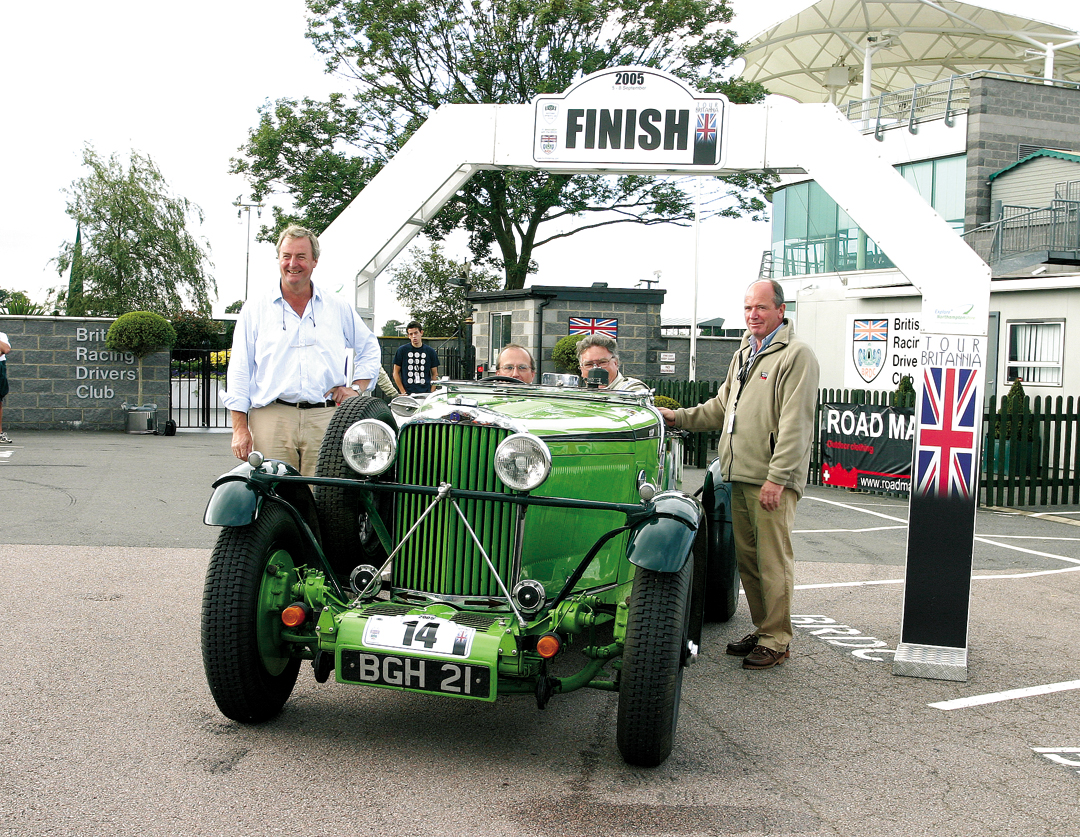
There was a consensus that Tour Britannia had been a very successful event, and everyone seemed to be planning a return in 2006. A special prize went to Richard Lloyd and Alan Rivers in their troubled Camaro. Rivers had entered James Hunt in a Camaro in 1973’s Tour of Britain. John Day shared an Alpine Renault A110 with Charles Reynolds. Charles had been in the Ford team in 1973, and John had run the Nissan team in that event with Graham Hill in one of his cars. We’ll all be back next year. With 23 cars making the finish, it had been a very demanding and satisfying event.
